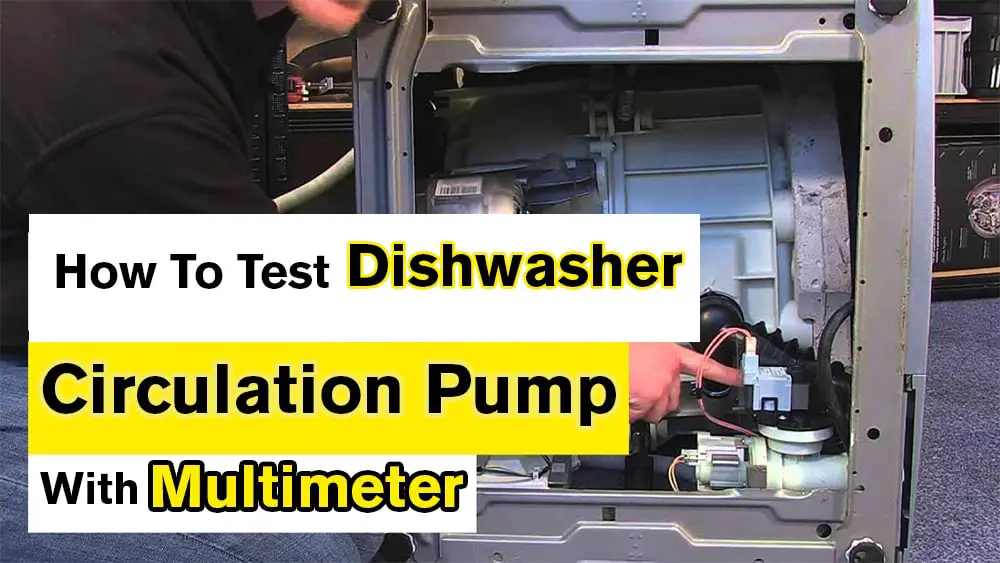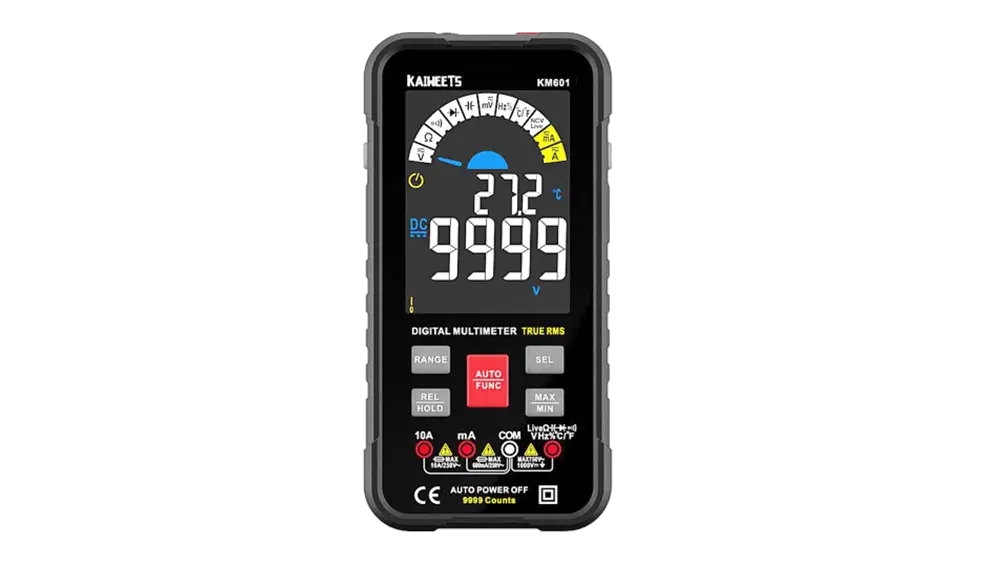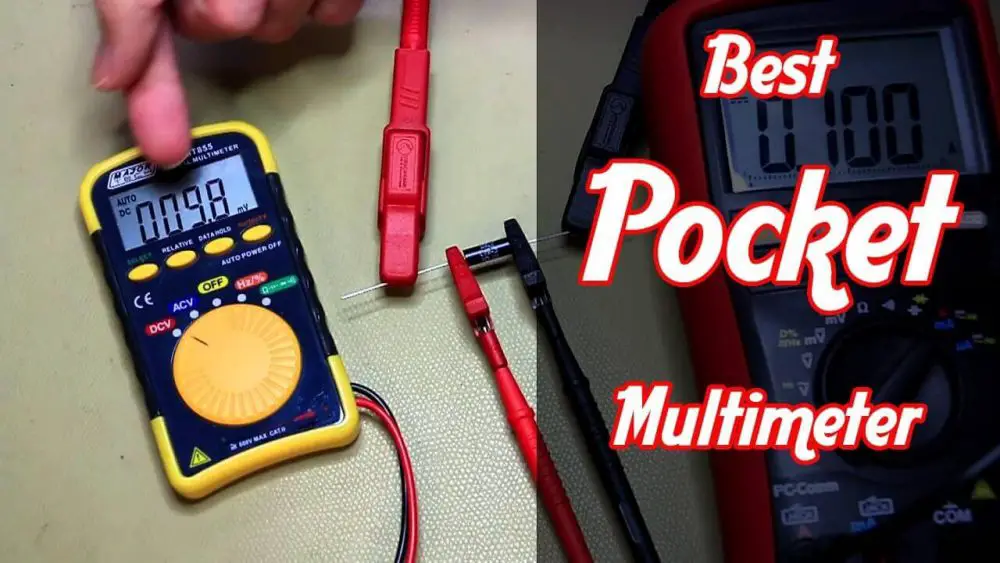How To Test Dishwasher Circulation Pump With Multimeter?
If you ever feel like your dishwasher isn’t moving water around correctly, you might want to check the circulation pump. Testing the circulation pump is an easy way to figure out what’s wrong and fix it. To test the pump, use a multimeter to see how many volts come out of the motor when you power it up. If the voltage is low, the pump may need to be changed most of the time.
With a multimeter, you can check how much electricity is going through the pump and figure out if there are any problems. By doing this, you can find out if the pump is working right and if its wiring isn’t right. A multimeter can also be used to check the water level in the dishwasher and make sure it is at the right level.
In this article, we’ll tell you everything you need to know about dishwasher testing. If you want to learn more about how a dishwasher works and how to test the circulation pump with a DMM, read this post carefully from beginning to end.

What is a dishwasher and how does it work?
A dishwasher is a device that automatically cleans cutlery, kitchenware, and dishware. Dishes are cleaned by the mechanical dishwasher by being sprayed with hot water, generally between 45 and 75 °C, with lower temperatures being used for fragile goods. This is in contrast to manual dishwashing, which mainly depends on physical scrubbing to remove soiling.
Dishwasher detergent and water are combined, and the cleaning solution is pushed to one or more spinning sprayers. To conserve water and energy, the mixture is repeatedly stirred. Basic cleaning with water and detergent comes first. When the wash cycle is complete, the water is emptied, new hot water is pumped into the tub using a solenoid valve, and the rinse cycle starts. Once the rinse is complete, the water is drained once more, and one of many drying techniques is used to dry the dishes.
Purpose of circulation pump in a dishwasher:
A dishwasher, in contrast to a clothes washer, is easy to comprehend. Unlike a washer, it does not fill completely with water, and just one motor is required for the entire process.
Washing the dishes is done by the water pump in a dishwasher. The pump and motor are one unit. If either fails, the other will be replaced as well. The motor pump, also known as the pump component, moves water throughout the dishwasher’s interior. Water will be distributed by the wash arms under and sporadically on top of each rack. When the water drips, it is recirculated until it becomes unclean by feeding it back into the circulation pump.
Checking whether a dishwasher circulation pump is bad
Dishes won’t be clean if the dishwasher’s circulation pump is not operating well. In this case, we will need to test it and have it repaired.

Testing the dishwasher circulation pump with Digital Multimeter (Resistance Testing)
Dishwasher pump testing is carried out in the following manner:
- Set the settings of resistance measurement on the multimeter by pressing the function button, so that the dial should appear on the ohm sign (Ω).
- If it is feasible, turn off the electricity to the dishwater first before removing the pump.
- The electrical windings of the pump must then be accessed in order to determine the resistance of the windings.
- Connect the probes of the multimeter with the electrical windings of the pump.
- Expect some resistance, such as wire resistance of 4 to 6 ohms. Readings will appear on the display of the multimeter.
- If the resistance is zero, the circuit is shorted; if it is infinite, it is open.
- If you have an open circuit, you must take the pump apart to see if one of the wires connecting it is burnt. Additionally, look at the appearance of the windings to make sure that excessive current through them has not turned them black.
- Reattach the wire if you can; if not, test the pump while it is still wet to avoid damaging the impeller.
- In the event of a short circuit, a new pump is required.
The Digital Multimeter is used to test the dishwasher’s circulation pump (Continuity Testing)
Electricity must go back and forth in an electrical circuit from one power source to another. The circuit is not continuous and has no continuity if there is even a little break in it. There is no circuit breaker, which is referred to as “good” continuity. As an example, you may try passing a little amount of electricity through a solenoid to verify if it has burned out. If it were burnt out, the circuit would be broken, no power would be flowing, and your meter would not display continuity.
Following are the important steps:
- Activate the Continuity Test mode by pressing the function on the smart multimeter.
- Connect the two test wires to the solenoid’s two bare wire terminals or ends. If required, use your hands to make better contact with the test leads and wire ends.
- The multimeter dial won’t move if there is no continuity. The meter will travel toward the right side of the scale and remain constant on reading if there is good continuity.
- The solenoid is useless if the meter only moves very slightly and remains on the left side of the scale.
- When a switch is closed, there will be little to no resistance (excellent continuity), and when the switch is open, there will be NO continuity. If not, the switch is broken.
Precautions:
Make sure that nothing, especially a power source, is attached to the solenoid leads before testing. You could obtain a reading through that item if the solenoid’s leads are still attached to it. You risk shocking yourself and burning out your multimeter if the object you’re checking for continuity on still has live power.
Frequently Asked Questions:
The correct answer is between 20 and 40 ohms. If the dishwasher pump has a lower resistance than this, it may overheat and fail. A dishwasher pump with a higher resistance may not start properly.
The pump in the dishwasher moves the water and detergent around during the dishwashing cycle. Food particles and greasy buildup can become stuck in the pump over time, causing water pressure to drop and the pump to fail. A power surge or other electrical problem can also damage the pump in some cases. If the pump in your dishwasher breaks, it must be replaced before the dishwasher can be used again.
How you respond depends on the type of dishwasher you have. If you have a front-loading dishwasher, the pump may become clogged. This is due to a filter in the front-loading dishwasher that can become clogged with food and other debris. If this occurs, water will be unable to pass through the pump and into the dishwashing cycle.
If you load your dishwasher from the top, the pump is less likely to become clogged. This is due to the lack of a filter in the top-loading dishwasher. But if something, like a piece of food, gets in the way of the water, it won’t be able to flow through the pump and into the dishwashing cycle.
Conclusion:
If your dishwasher isn’t draining properly, the circulation pump may be to blame. To test whether the circulation pump is working, you’ll need a multimeter. Start by testing the continuity of the winding. Maybe there is no continuity, then the pump needs to be replaced. Secondly, there is continuity, then test the resistance of the winding. If the resistance is infinite, then the winding is open and needs to be replaced. If the resistance is low, but not zero, then the winding is shorted and also needs to be replaced. Finally, if the resistance is normal, then check for an obstruction in the impeller. If there is an obstruction, then remove it and retest the circulation pump.



